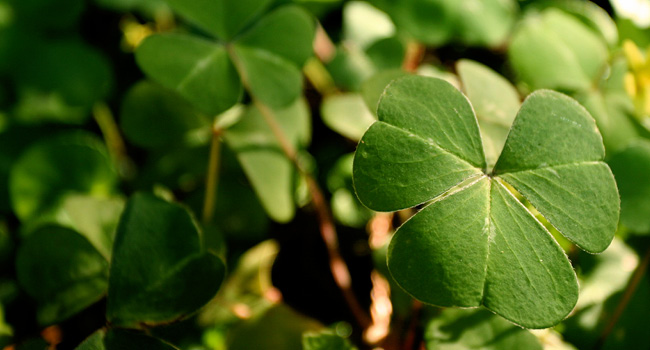
You may already know that St. Patrick wasn’t Irish. He was from a part of Roman Britain that is current day Dumbarton, Scotland. Patrick was 16 years old in about the year 405, when he was captured in a raid by pirates and became a slave in what was then radically pagan Ireland. Though his grandfather was a priest, and his father a deacon, Patrick recorded in his Confessions that “he knew not the true God.” But forced to tend his master’s sheep in Ireland, he spent six years of bondage mainly in prayer. He escaped following guidance received in a dream and returned home. While at home in another dream, he heard the people of Ireland crying out, “We beg you, holy youth, that you shall come and shall walk again among us.” Patrick set about preparing to be a missionary.
Patrick was in his mid-40s when he returned to Ireland. Intimately familiar with the Irish clan system (his former master had been a chieftain), Patrick’s strategy was to convert chiefs first, who would then convert their clans through their influence. He made missionary journeys all over Ireland, and very effectively led the island to Christ. Ireland soon became known as one of Europe’s Christian centers.
In spite of how greatly he was used by God, Patrick always saw himself as a humble rustic, with no special abilities, only a special call and an imperative message. As Patrick wrote:
“I am, then, first of all, countryfied, an exile, evidently unlearned, one who is not able to see into the future, but I know for certain, that before I was humbled I was like a stone lying in deep mire, and he that is mighty came and in his mercy raised me up and, indeed, lifted me high up and placed me on top of the wall. And from there I ought to shout out in gratitude to the Lord for his great favours in this world and for ever, that the mind of man cannot measure.”
Like Patrick’s ministry which had a long break between his call and its realization, so there was a long break between his life and the celebration that bears his name. Patrick’s Day of March 17 appeared as a holy day in Ireland in the 9th or 10th Century, some 400-500 years after his death. Not until the early 1600’s was St. Patrick’s Day observed by the Roman Catholic Church. It was a solemn religious feast, which included a law that all pubs be closed that day.
The first St. Patrick’s Day parade was a small march by some Irish soldiers in New York City in 1762. Parades were a way to rally Irish sentiment in America and local Irish aid societies began to sponsor them. In 1848 several of these were combined into one official New York City St. Patrick’s Day Parade. Other cities such as Boston and Chicago soon followed suit.
Though these parades were held on St. Patrick’s Day, they were more about Irish culture and identity than about Patrick, and came to include many features special for the Irish. One feature that derives from a legend about Patrick is the display of the 3-leaved clover-like plants known as shamrocks. Irish widely believe Patrick used the shamrock as an illustration of the Holy Trinity. Green shamrocks used as lapel pins on St. Patrick’s day expanded into “the wearing of the green”, a reminder of the shamrock, and of the landscape in the Emerald Isle.
Alcohol has been a part of Irish social life since ancient times. Since the 1600’s, if not earlier, the Irish are reputed to use alcohol as an emotional escape from grinding poverty. On the positive side, certainly the Irish have pride in some of their popular beverages, such as Guiness beer, and Irish whiskey, that have been well-received around the world. Commercialism by American breweries and distilleries has fueled the binge drinking that has become such a big part of St. Patrick’s Day. Only since the 1990’s has Ireland started to see the kind of raucous St. Patrick’s Day celebrations prevalent in America.
Here at St. Michael’s-by-the-Sea, we see nothing wrong with responsible enjoyment of a drink or two on St. Patrick’s Day. But let’s remember the real Saint Patrick – a humble servant of Christ – and the great work of bringing Christ to the Irish that God accomplished through him. Again from St. Patrick’s Confessions:
“I am greatly God’s debtor, because he granted me so much grace, that through me many people would be reborn in God, and soon after confirmed, and that clergy would be ordained everywhere for them, the masses lately come to belief, whom the Lord drew from the ends of the earth, just as he once promised through his prophets.”
Written by David McKinley, Children’s Ministry Catechist for grades 3rd-5th.
Photo: Clover; Photographer Joanne Wan
Works Used and Cited:
Confessions of Saint Patrick http://www.ccel.org/ccel/patrick/confon/confession.html
How the Irish Saved Civilization by Thomas Cahill
Church History in Plain Language by Bruce Shelley
